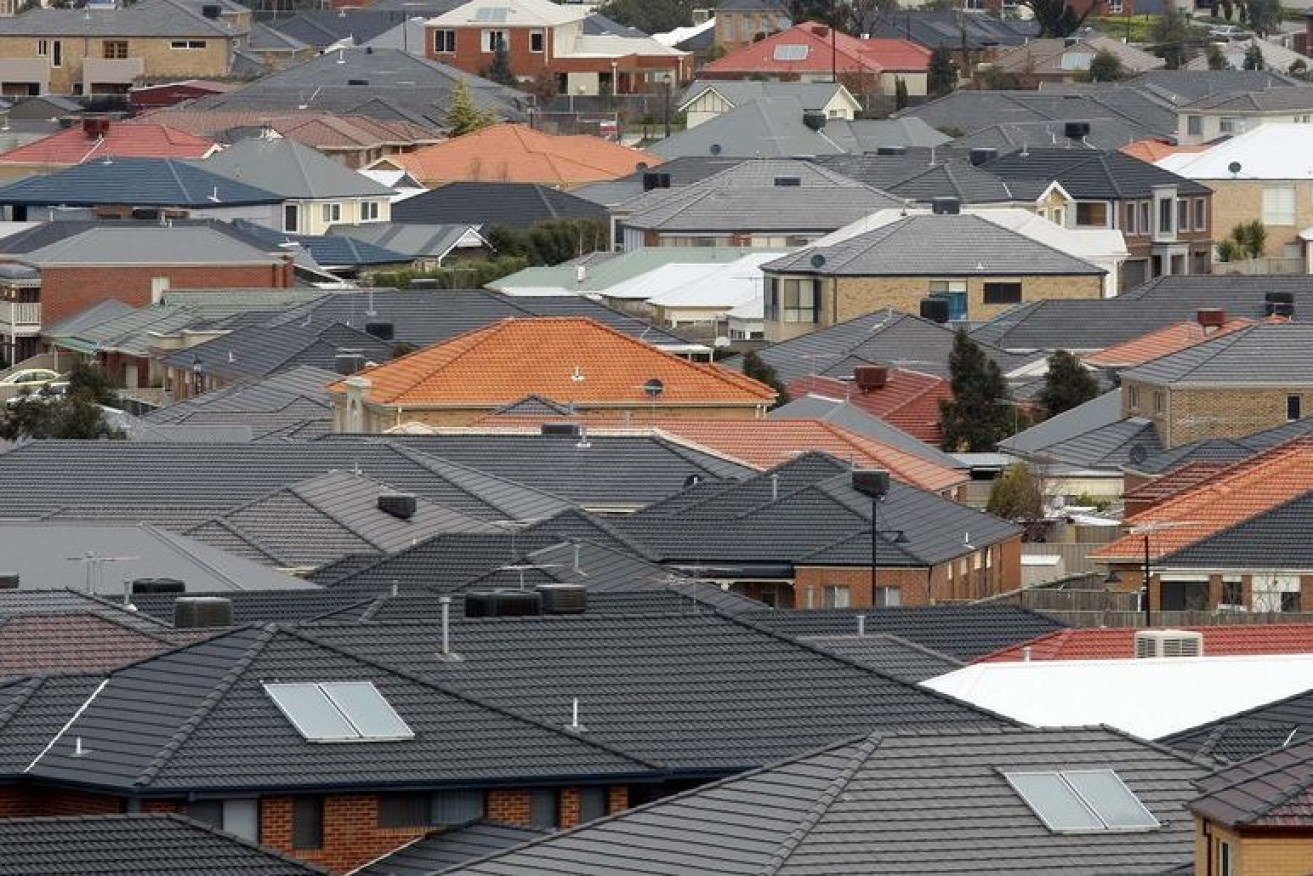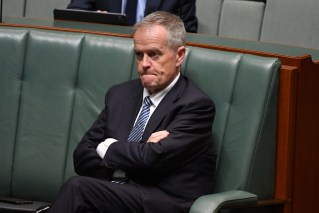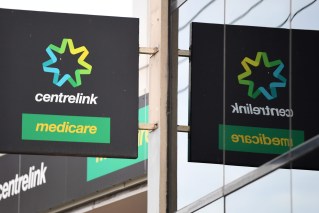Are you prepared to avoid mortgage stress?
Mortgage stress levels among Australians have continued to soar amid the global outbreak of COVID-19, with data showing more than 1.4 million Australian households are now in mortgage stress and almost 100,000 could soon default on their loans.

Almost half (45 per cent) of deferred mortgages are back to making regular loan repayments. (Photo: Mick Tsikas, File Photo: Reuters)
As Australia enters its first recession in 29 years, market analysts and economists predict that once the JobKeeper payment ends in September, and mortgage repayment holidays are over, these levels of cash-flow stressed households could quickly translate to mortgage defaults.
The latest data from Digital Finance Analytics (DFA), based on its rolling household surveys, reveal that to the end of May, the percentage of households in mortgage stress reached 37.5 per cent, which equates to 1.42 million households.
DFA principal Dr Martin North said the study defines mortgage stress in terms of a household’s actual cashflow — incomings and outgoings.
“The mix of households in stress are changing, as a larger number of affluent households are finding their finances are under pressure,” North said.
“Indeed, whilst many battlers are under pressure, they are used to it, but more affluent households are experiencing financial pressures as incomes have dropped.”
He said JobKeeper had not been a full replacement of their usual income.
“They are also exposed to property investments which are not performing, higher vacancy rates and the like; and in some cases, reduced hours too,” he said.
“Typically, it can take two to three years for stressed households to either sell up on their own volition, or get foreclosed, so we expect higher default ahead given unemployment will be under 7 per cent by the end of next year.”
Rental stress is also rising, putting more pressure on investment properties.
“Around 12 per cent of investors are indicating they may consider selling in the next year, and around half have been using Airbnb to let their places, which is now not possible,” North said.
Stress is not limited to the metropolitan capitals.
“The highest proportions are in Tasmania. Households with low incomes and strong rises in prices,” he said.
“And young growing families, including first-time buyers are most exposed.”

Rental stress is also rising, putting more pressure on investment properties.(ABC News: Michael Janda)
Call to slowly taper off JobKeeper
North said he was worried about what would happen after September when the JobKeeper wage subsidy and mortgage repayment holidays are removed.
He said the withdrawal of payments needed to be tapered and warned that as the banks start requiring repayments again, some people may switch to interest-only loans.
“I am not sure switching to interest-only loans is a smart move as capital still has to be repaid at some point,” he said.
Alison Pennington, senior economist at The Australia Institute’s Centre for Future Work, said the situation post-September was fragile given Australian private household debt is among the highest in the OECD and is comprised mostly of mortgage liabilities.
“The shutdowns have made many households with higher financial obligations — including mortgages and high private rents — dependent on the JobKeeper and JobSeeker payments,” she said.
“Cutting the incomes of millions of households will undermine payments underpinning the entire housing finance system.”
She said housing price inflation had allowed Australian households to consume like they’re rich.

Alison Pennington says the situation after September is fragile given Australian private household debt is among the highest in the OECD. (Photo: ABC News: John Gunn)
“This hollow, asset-led growth model was steering us into dangerous, unstable territory pre-pandemic,” she said.
“The political dilemma for the Morrison Government is clear: The longer people understand government is capable of delivering liveable incomes outside the market, the greater the risk to the Morrison Government’s business-led rebuild agenda.”
She said if the Federal Government did not support people in being able to continue to pay mortgages and rent, “they risk undermining their core political base in the private housing investment system”.
The Morrison Government is preparing a revamp to its $70 billion JobKeeper program despite Treasurer Josh Frydenberg conceding the nation is in its first recession in three decades.
The March quarter national accounts showed the economy shrank by 0.3 per cent, bruised by the summer bushfires and the coronavirus pandemic.
Frydenberg has said the Government would reassess the flat $1,500 a fortnight payment that has supported the employment of about 3.5 million workers.
“We want to understand whether the quantum — that $1500 payment — continues to be the right amount,” Frydenberg said on Wednesday.
Shadow Treasurer Jim Chalmers said the Government failed to recognise that Australians are headed for another cliff in September when government support in the economy is withdrawn.
“Having introduced the support for the economy too narrowly and too slowly, Australians can’t afford the Government to withdraw the support too quickly or too bluntly,” Mr Chalmers said.
COVID-19 sees mortgage arrears rise in March
North is not alone in his predictions of more pain for households. A report from S&P Global Ratings predicts rising unemployment shape mortgage arrears in the months to come.
It found the number of homeowners in arrears on mortgage repayments rose slightly in the first quarter of 2020, but the problem would worsen after September.
Nationally, arrears on nonconforming mortgages rose to 4.38 per cent in March compared to 3.96 per cent a month earlier, while prime mortgages remained unchanged at 1.41 per cent.
“We do not expect to see the pain of COVID reflected in mortgage arrears reporting until at least Q4 [fourth quarter of] 2020,” S&P analyst Erin Kitson said.
She said lenders are not required to include loans under COVID arrangements in traditional arrears reporting until the end of mortgage relief periods.
“We expect to see a more pronounced uptick in mortgage arrears after these periods end,” she said.
“This may be further exacerbated by the expiration of JobKeeper/wage subsidy payments for borrowers whose income or business cash flows are yet to recover from the disruption to business activity arising from COVID.”
She said mortgage arrears could trend higher in tourism-dependent areas where hospitality, leisure and recreation services make up a larger share of local employment.
AMP chief economist Dr Shane Oliver said a spike in unemployment could trigger debt servicing problems and forced sales.
“Once the support measures end later this year, measured unemployment will likely rise to around 8 per cent and take a long time to fall back to the pre coronavirus levels around 5.2 per cent,” he said.
“This, in turn, is likely to lead to some increase in mortgage defaults as bank payment holidays for around 440,000 mortgages end, boosting forced sales and act as a drag on property demand,” Dr Oliver added.
While the unemployment rate jumped to 6.2 per cent in April, JobKeeper concealed the true extent of job losses from the official data.
It has kept millions of workers attached to their employers, and therefore counted “employed”.
If those 490,000 persons who dropped out of the labour force last month were still actively looking for work, the number of officially unemployed persons would be nearly half a million higher, at about 1.3 million.
Oliver said a 20 per cent house price fall was still possible if there was a second wave of coronavirus infections, but in the absence of that, he expected national average prices to fall up to 10 per cent by next year.

Mortgage arrears could trend higher in tourism dependent areas where hospitality, leisure and recreation services make up a larger share of local employment. (Photo: ABC News: Dan Cox)
Australians are finding it hard to pay their bills
The pressure is compounded by the fact that people are not just struggling with mortgages, but household bills in general.
NAB economist Kaixin Owyong said ABS household survey data showed financial stress remains widespread with 7 per cent of households receiving some kind of payment relief.
“This includes relief related to mortgages, rent, credit cards, utility bills and other loans,” she said.
Narrow Road Capital’s Jonathan Rochford said data from the Australian Banking Association in early May showed more than 10 per cent of home loan borrowers in financial hardship.
Those who have asked for hardship assistance — getting approval from their lender to reduce their repayments or getting a partial reduction in repayments, such as switching from principal and interest repayments to interest-only repayments — typically aren’t counted in arrears data.
But the fear is that these could translate to into defaults if banks stop being lenient.
“Given the political pressure on the major banks if borrowers are able to continue to pay at least the interest on the loan the banks are likely to give them time to find another job or to get their business back up and running,” Rochford said.
“However, if a borrower can’t meet the interest payments on their loan it’s likely they’ll be under pressure to sell the property.”
He said the Federal Government’s stimulus payments were helpful but “nowhere near sufficient to cover an average mortgage repayment and other living expenses for a family”.












